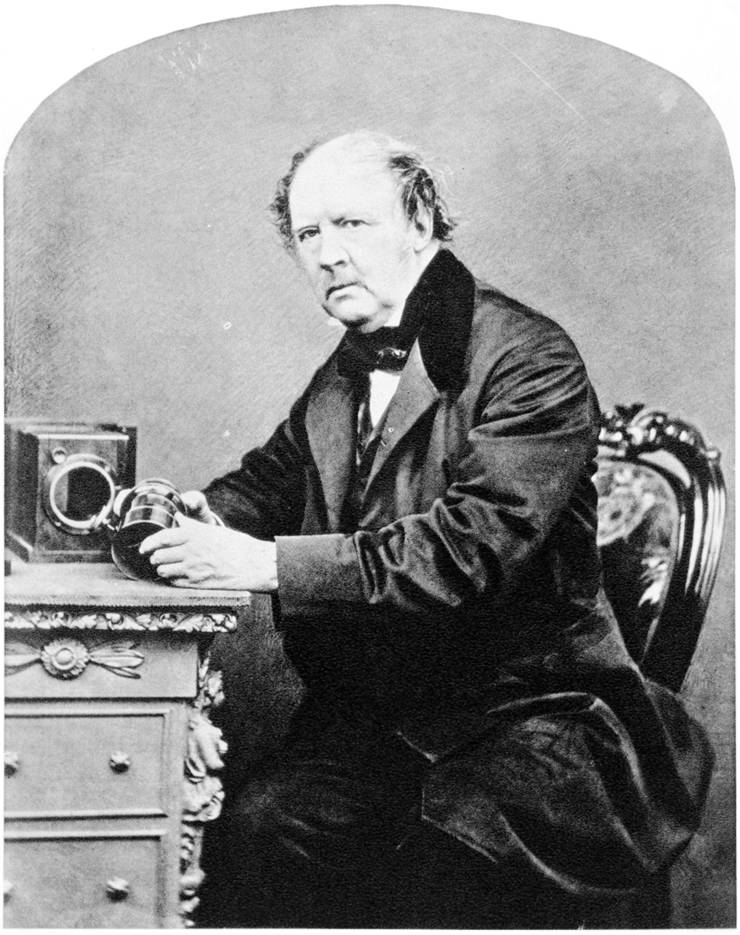Henry Fox Talbot - Salted Paper and Calotype Processes
William Henry Fox Talbot (1800 - 1877) was a British landowner, scientist, archaeologist, politician, and photography pioneer who invented the calotype process, one of the earliest photographic processes.
Talbot was born on 11 February 1800 to f William Davenport Talbot of Lacock Abbey and Lady Elisabeth Fox Strangways and was their only child. He was educated at Rottingdean, Harrow School, and Trinity College, Cambridge. At Trinity College, he received the Porson Prize in Classics in 1820. A year later, he graduated as a twelfth wrangler (a student who gains first-class honors in the third year of the University's undergraduate degree in mathematics). He published many scientific works from 1822 to 1872 on mathematics. He began his experiments in optics very early, and they led them to photography. He was also a politician. He supported the Whig Ministers and was a Member of Parliament for Chippenham between 1832 and 1835. After that, he retired from Parliament, but in 1840 he held the office of High Sheriff of Wiltshire. He engaged in the field of Assyriology for 20 years as an archeologist. He was one of the first decipherers of the cuneiform inscriptions of Nineveh, with Sir Henry Rawlinson and Dr. Edward Hincks, and he wrote a few works on archeology.
Talbot began his experiments in photography in 1934, and by 1841, he discovered the calotype or talbotype process when he patented it. This process used paper covered with silver iodide, while the other methods used metal plates at the time. This produced a translucent original negative image and allowed for multiple positives to be made by contact printing. This was better than a daguerreotype which was popular at the time and produced opaque positive and which could be copied only by photographing it again. Calotype used gallic acid to develop the latent image. Talbot described his process in his book "The Pencil of Nature" in 1844. Royal Society awarded him with the Rumford Medal, which is given for "an outstandingly important recent discovery in the field of thermal or optical properties of matter made by a scientist working in Europe."
The calotype was an improvement in the works of John Herschel and Thomas Wedgwood. It used silver iodide instead of silver chloride and a different developing agent, gallic acid and silver nitrate—this shortened exposure time from hours to just a few minutes and made photography much more accessible.
But everything wasn't perfect. As we said, Talbot patented the calotype in 1841. Before him, Daguerre gave his daguerreotype "free to the world" (everywhere except England), and, at that time, patent holders were attacked for enforcing their rights. Talbot sold individual patent licenses for £20 each when he began selling them, only to lower his fee to £4 or even free for amateurs and £300 annually for professionals. He thought he was within his rights because he spent thousands of pounds while developing the process, but the general public did not think so. In 1852, Lord Rosse, the President of the Royal Society, and Charles Lock Eastlake, the president of the Royal Academy, wrote an open letter to Talbot and published it in The Times. In it, they called Talbot to give up on patent rights for calotype because they thought it slowed down photography development. Talbot agreed but not entirely, and he stopped charging licensing fees for amateurs but continued to trust professionals. When he wanted to extend his patent in 1854, he filed a lawsuit against one of the photographers. Unhappy with how the case went, he decided to give up on the patent and not extend it.
